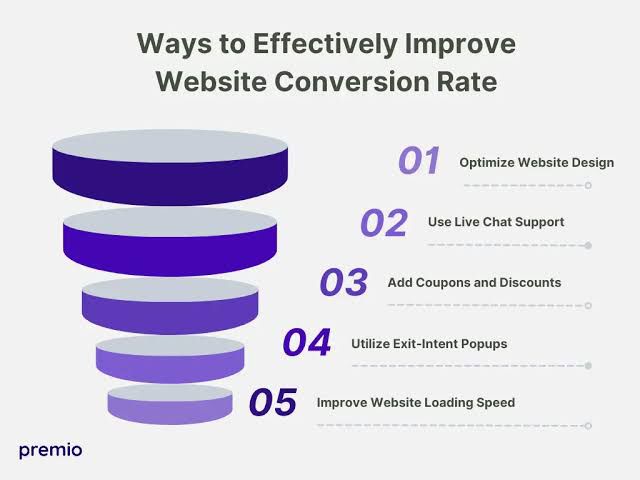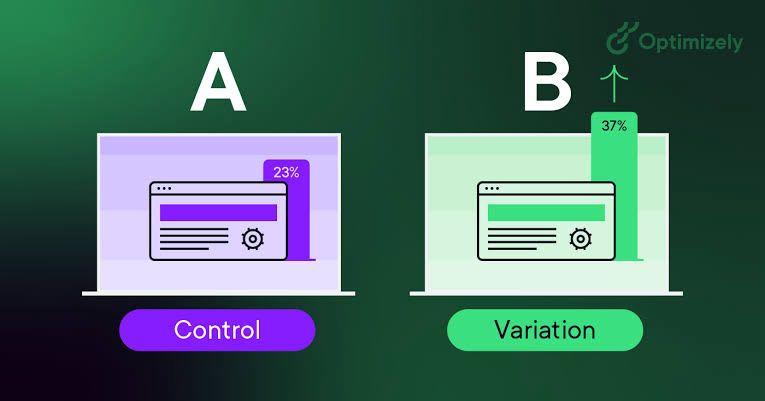Book Appointment Now
🚀 Strategies to Improve Your Website’s Conversion
To maximize your website’s conversion rate in 2025, it’s essential to blend performance optimization, UX design, personalization, and data-driven experimentation. Here’s a deeper dive into the most effective tactics, with up-to-date benchmarks and real examples.

📌 1. Benchmark Your Baseline
- Track your starting point. Know your average conversion rate (leads, purchases, sign-ups). The e-commerce average is ~1–3%, while high performers hit 5–10 % or more.(turn0reddit20)
- Use tools like Google Analytics, Hotjar, or Microsoft Clarity to understand visitor behavior, drop-off points, and heatmaps.(turn0search3)
🚀 2. Speed & Performance Optimization
Fast-loading pages are foundational. Even a 1-second delay can reduce conversions by 7 %, while faster load times mean more revenue.(turn0search5, turn0search6)
🔧 Key speed tactics:
- Optimize and lazy-load images: Compress images and use formats like WebP. Enable lazy loading to defer off-screen content.(turn0search7)
- Minify and bundle CSS/JS/HTML: Remove unnecessary code and compress via GZIP. A 3-second delay may slash conversions by up to 50 %.(turn0search10)
- Reduce HTTP requests and plugins: Combine assets and audit plugins regularly. Third-party scripts can add ~4% to load time.(turn0search7)
- Leverage CDNs and caching: Serve static assets globally via CDNs and implement browser caching to improve repeat load speed.(turn0search2)
💡 Business case: Walmart saw a 2 % conversion lift per 1-second speed gain, and Mobify achieved 1.11 % lift per 100 ms.(turn0search5)
🎨 3. Landing Page & UX Design
A focused and friction-free user experience leads to better outcomes.

💡 Best practices:
- One clear goal per page: Ensure CTAs are obvious, offer concise copy, and use persuasive headlines. HubSpot found optimized landing pages boost conversions by 206 %.(turn0search4)
- Social proof and trust signals: Add testimonials, security badges, and logos. These increase conversions by up to 13 %.(turn0search4)
- Responsive, mobile-first design: Over half of traffic is mobile—prioritize mobile load times, readability, and touch-friendly layouts.(turn0search9)
🎯 4. Reduce Friction in Checkout, Leads & Forms
Streamline conversion paths to minimize drop-offs:
- Simplify forms: Only ask for essential fields. Use inline validation and remove distractions.(turn0reddit18)
- Offer guest checkout: Removing mandatory account creation can boost purchase completion.
- Support multiple payment/payment methods: Add options like credit cards, mobile wallets, and regional methods to reduce friction.(turn0reddit18)
🔄 5. Continuously Experiment & A/B Test
A/B and multivariate testing aren’t optional—they’re foundational.(turn0search16)

🧪 How to experiment effectively:
- Test headlines, page layouts, CTAs: Use tools like Google Optimize, Optimizely, or VWO.
- Leverage smarter experimentation: As algorithms improve, tools can now test and roll out winning variations automatically.(turn0search3)
- Adopt a hypothesis-driven approach: For example, “Button color change → more clicks,” or “Shortening the form → lower abandonment.” Each test should be tracked and analyzed statistically.
🤝 6. Personalization & Behavior-Based Journeys
Generic content isn’t enough; deliver experiences tailored per user or segment.(turn0search3)
⚙️ Applied tactics:
- Behavior-based content: Adjust content based on referral sources, previous visits, or product interests.
- Dynamic recommendations: Adjust homepage offers and suggestions based on real-time user behavior or past purchases.
- Segmentation: Create variant funnels for high-intent vs. casual users for higher conversion yield.
🧠 7. Monitor Engagement via Heatmaps & User Recordings
Tools like Hotjar and Clarity help uncover friction:
- Heatmaps: Reveal where users click and where they ignore (e.g., hidden CTAs or non-clickable images).
- Session recordings: Spot UX issues—such as unexpected form skips, hover patterns, or exit points.
- Real-time feedback: Pop up surveys or “What stopped you today?” prompts can help refine UX.(turn0search8)

📊 8. Use Behavioral & Conversion Analytics
Track both macro and micro conversions:
- Funnel tracking: Map key user journeys (e.g., page visited ➜ add to cart ➜ checkout).
- Intermediate metrics: Monitor bounce rate, cart abandonment, scroll depth.
- Goal attribution: Tie conversions to campaign sources and channels for better optimization.
💬 Final Tips & Reminders
- Performance isn’t optional. The faster your site loads, the higher your conversions and ranking benefits.(turn0search5)
- Keep UX simple and mobile-optimized. Every element should serve your goal.
- Experiment constantly. Small iterations—tested and measured—add up year-over-year.
- Make personalization real. Reduce irrelevance by serving relevant content based on user behavior.
- Measure what matters. Track both conversions and experiences, analyze results regularly, and iterate.
